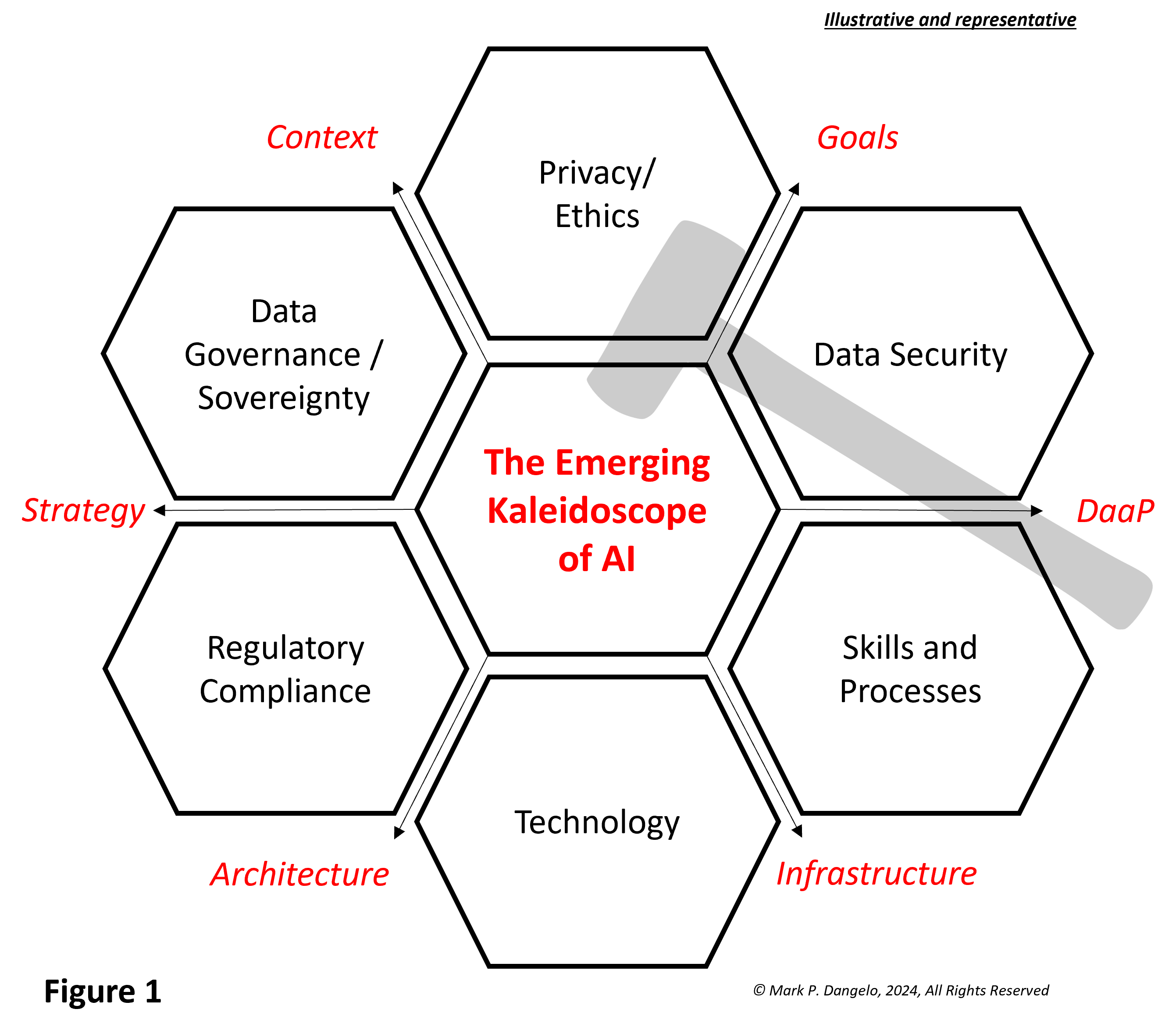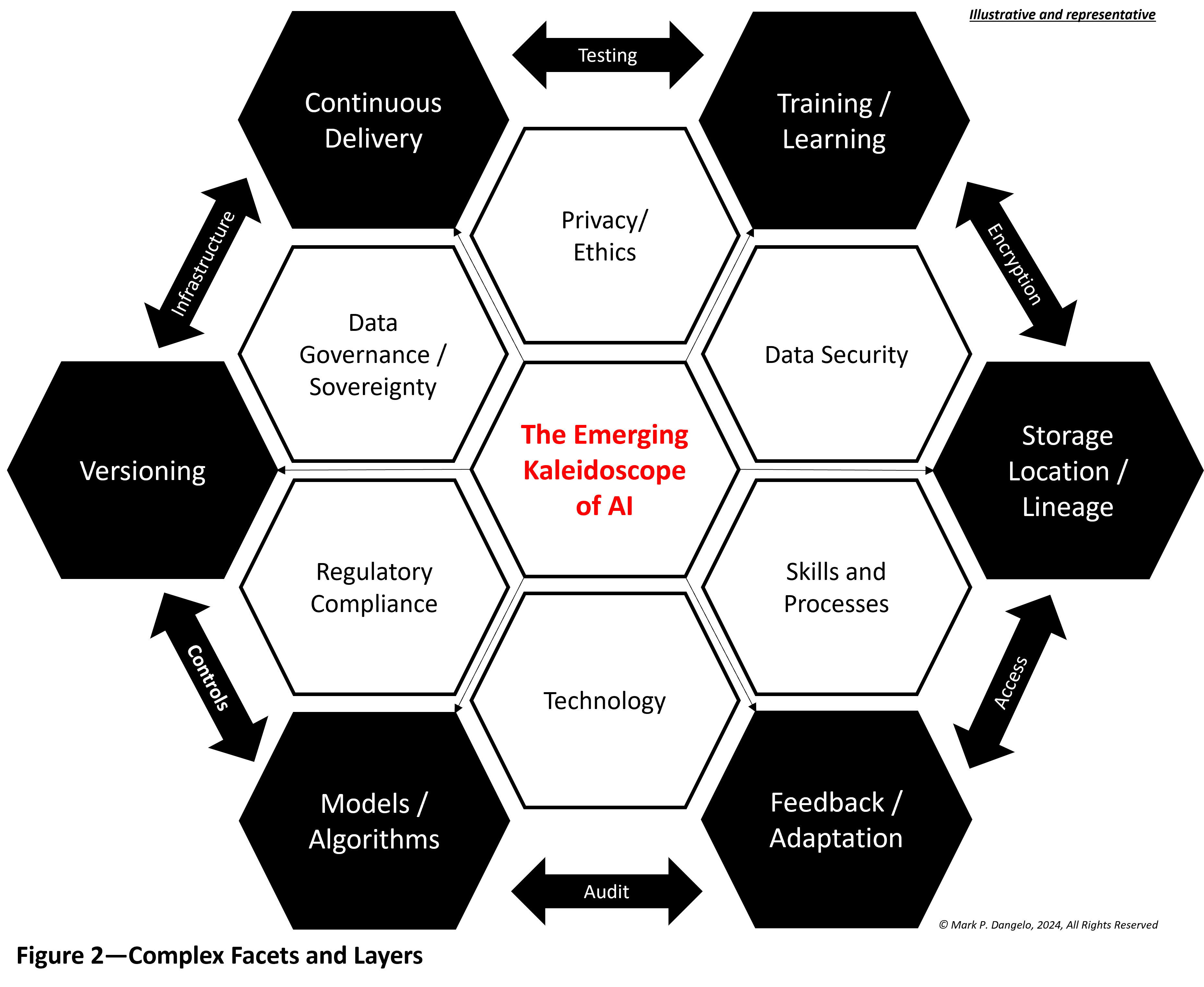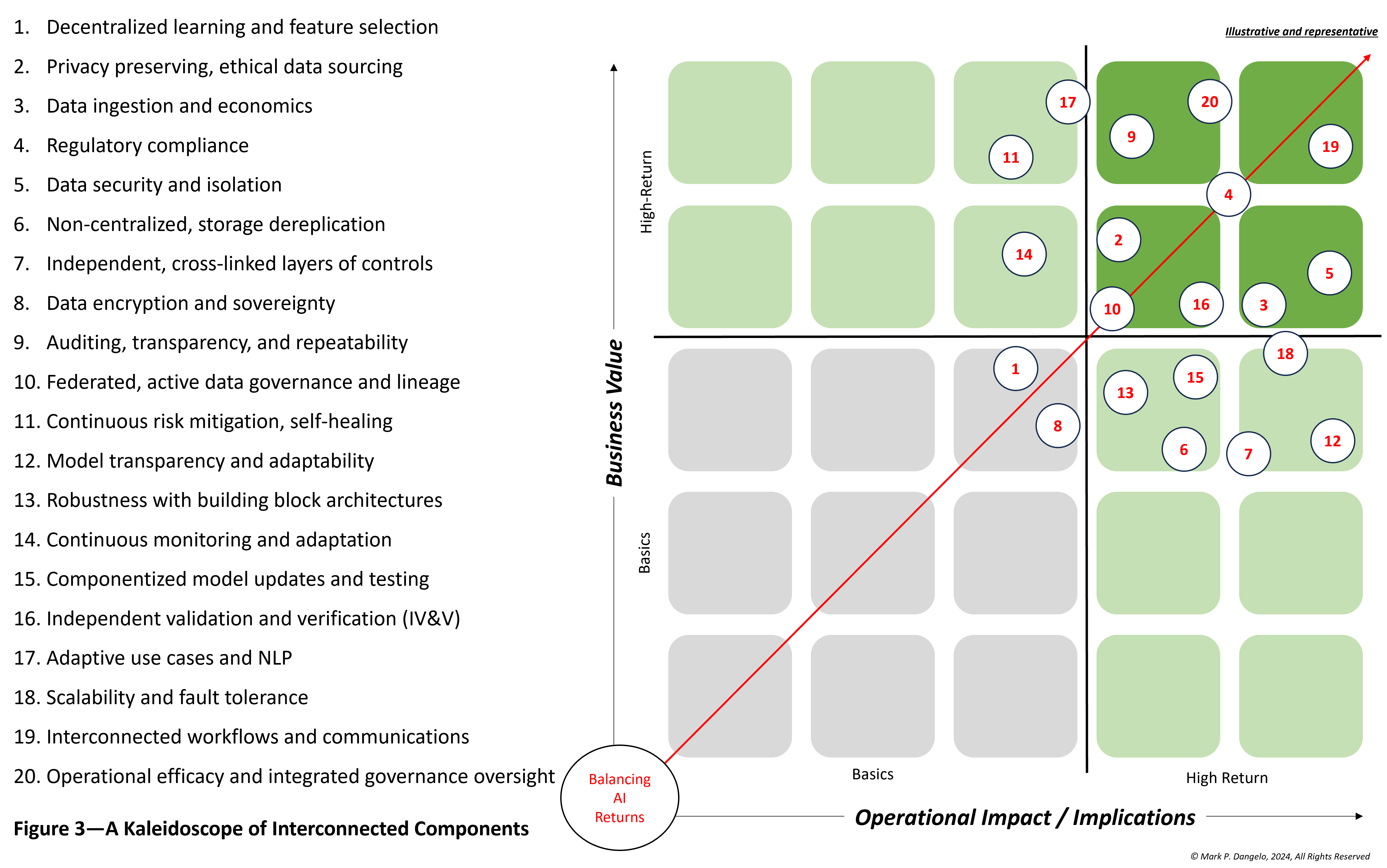AI is everywhere; however, utilizing traditional system approaches to such solutions may risk repeating the same mistakes and fragmentation we've seen over the last 35 years
Among experienced IT personnel, there is a saying, When is a hammer not a hammer? This circular phrase is based on the application of a cognitive bias termed the Law of the Instrument in which a common (technology) tool is applied repeatedly to all situations.
Yet, artificial intelligence (AI) is not a hammer or a one-size-fits-all commercial off-the-shelf design. It is an intelligent data delivery approach for the next generation of products for audit, legal, and regulatory compliance which requires continuous feedback from adaptive learning systems.
As we are very aware, beginning in late-2022 and accelerating throughout 2023, AI captured the imaginations of every executive and researcher across the world, and 2024 will likely extend its innovation iterations and dominance. (Much as over the last two decades, did information engineering, relational databases, cloud computing, blockchain, and more recently, SaaS.) In fact, nary a 2024 go-to-market, legal, supply chain, application systems, audit compliance, customer service, or back-office strategy excludes AI as part of their infrastructure, operational processes, or sought after skills.
Today, we are witnessing bias taking place with the rapid advancements surrounding artificial intelligence solutions, software, chips, and skills. And if people see a current or future problem, AI is the hammer that must be deployed.

However, what ideation, strategy, design, or implementation of AI are we talking about? In the end, the nuances, details, and context of implementation mean as much as the underlying technology advancements. AI in 2024 is about a kaleidoscope of options, designs, and solution sets. As illustrated in above, there is no longer a one-size-fits-all — e.g., hundreds of generative AI (Gen AI) solutions — as the number of variables and options require smaller hammers and greater precision.
To reinforce the exponential complexity, a quick AI query about AI returns dozens of forms including Gen AI, general AI, machine learning, deep learning, natural language processing, expert systems, computer visioning, and even robotics. Another AI query for AI designs yields unfamiliar terms of gradient boosting, random forest, decentralized learning, adaptive learning, checkpointing, and dozens more. Adding additional regulatory parameters, we can ask what AI solutions best fit to the European Union’s AI Act, the Biden Administration’s AI Executive Order, passed and pending state oversight rules, and numerous foreign government proposals? When assembled across a landscape, an ecosystem of AI capabilities and choices, the idea that AI represents a singularly familiar design and implementation concept is proving to be an early mirage of what is coming, what has arrived, and what will continue to define extraordinary complex interfaces.

The takeaways from the graphic above concentrates on the ideas that: i) AI is based on a continuously adaptable data design; ii) models and outcomes will never be static as they have to learn and be retrained to ensure their operational and customer efficacy; iii) there will be many models, designs, and innovations; and mostly importantly iv) AI will communicate with other AI systems, creating cascading inputs, outputs, and outcomes that demand continuous monitoring and adjustments. It is this last takeaway that represents a step-function shift from tradition.
Previous applications created outputs defined on coded or systemized processes using known controls. AI outputs with systems can learn and often lack transparency, creating black boxes of decision-making which may not be steady state. Over time these learning algorithms can greatly improve, but the converse can also be true.
Now as the AI kaleidoscope turns with innovative and technological advancements, new options are presented demanding new skills, use of humans in the loop, and unplanned system redesign or even retirement that seems improbable for implementations that are less than a year old. So, what should be done? How can leaders across industries and the core disciplines of audit, tax & accounting, legal, and regulatory address controls and designs which are no longer steady state? Even more challenging is the question of how will AI be regulated — beyond a set of macro-principles of operation — when the assessment approaches are opaque and iterating continuously?
The problem with current design and implementation methods is that they start with a solution and wrap requirements around the technology. For example, organizations are actively pursuing prompt engineering skills for Gen AI deployments, and others are seeking out federated AI designs due to the perceived robustness of data security and sovereignty capabilities. Yet, how did they arrive at the selection of the solution when the requirements, skills, operational rationale, and implications are still in the preliminary stages?

To this point, the above illustration ignores the technology to be used and instead focuses on the AI components that are likely common to all forms of AI and their architectures. It is worth noting that the 20 items listed above are not comprehensive. They are a starting point for not just which AI and what features should be included, but also for the implications of skills, adaptive oversight, error correction, feedback, and more.
Additionally, this straw-model industry representation creates the foundational building blocks that will be consistent as AI technology moves from embryonic deployments to stacks of interconnected, specialized solutions that comprehensively alter operational models. If leaders and the industry they represent adopt the traditional systems design approaches, every AI system will be process-siloed and data-fragmented.
Now considering the latest AI regulations — such as those come from the EU and some US states — the burden of regulatory compliance for the limited AI solutions is viewed as manageable. Now fast-forward to the end of 2024, and the burden likely will not be linear as additional, critical AI initiatives come online. This is why AI deployments require a fresh, tightly coupled set of architectural building blocks before they are selected, which greatly reduces the systemic errors found within today’s traditional and SaaS applications.
Indeed, AI is exponentially moving beyond point ideas — accounting, auditing, supply chains, legal, regulatory compliance, etc. — and being designed for scale within corporations and their industry partners. AI today is where applications were in the 1980s. Yet to arrive at cloud architectures and SaaS solutions took more than two decades; and it took another two decades for as-a-service componentization to create the technology markets of today. AI has been simmering in research labs for the same period of time.
Now, we have momentum and acceptance that AI can be a next-gen business multiplier which not only improves profitability but also how we work and interact. The implications illustrated above is that AI will impact everything — but its success, its adaption, and its evolution is less about the technology and more about the business case and its requirements.
Moving forward, AI is rapidly becoming a mosaic of options — a kaleidoscope of building blocks that continually change depending on the innovation and its architecture. A failure to understand the history of creating and provisioning systems represents a larger challenge than skills, technologies, or even stringent oversight — combined.
Those organizations that holistically address the components illustrated above will create new markets and book outsized returns. Those that chase the technology and address the commonalities afterwards will witness rapid diminishing returns for their efforts as they flounder from one AI trend to the next.







